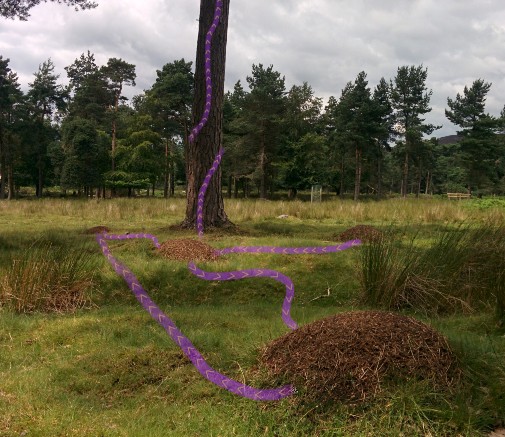Wood ants show the way when it comes to getting a good meal
Posted on 4 May 2021
 The study revealed that wood ant colonies make sophisticated and highly effective transport networks. Credit Valentin Lecheval
The study revealed that wood ant colonies make sophisticated and highly effective transport networks. Credit Valentin Lecheval
Well, now it seems the humble wood ant faces the same dilemma.
A University of York study has shown that wood ants also face trade-offs between visiting the nearest sources of food versus heading for high-quality food.
The study revealed that wood ant colonies use simple foraging rules, not just for collecting food, but also to make sophisticated and highly effective transport networks.
Sharing
These highly cooperative ants also share food between socially connected nests. This food sharing is efficient, low cost and robust to disturbance, the study reveals.
The researchers say the findings could have implications for humans, as transporting people and goods effectively in a complex environment is a big challenge and the highly cooperative wood ants appear to be very successful at it.
The authors of the study, which is published in the Proceedings of the Royal Society B, wanted to find out: how do ants make these successful networks? Can we learn from what the ants have achieved?
The study combined two modelling approaches used to understand ant foraging. One describes the behaviour of the ants making and following trails, and one describes the pattern of where a colony distributes its ants depending on positive feedback.
Food sources
“Both models show us that foraging ant colonies successfully choose nearer and better food sources,” said Dr Elva Robinson, senior lecturer in ecology at the University of York.
“But these ant colonies can use foraging rules not just to solve the quality-distance trade-off when they are collecting food but also to make complex nest networks for food sharing.
“The network properties they demonstrate, efficiency and robustness, are important for human transport networks too. Ants make successful transport networks using simple positive feedback loops that mean they use good routes again in future. We could adopt these ideas in our own network design.”
The research was funded by the National Science Foundation, while the fieldwork was funded by NERC and the National Trust.
The study involved researchers at the University of York, Harvey-Mudd College, George Washington University and Exeter University.
Explore more news

New butterfly species created 200,000 years ago by two species interbreeding
Thursday 18 April 2024

Children in the North at greater risk of entering care
Wednesday 17 April 2024

Boreal forest and tundra regions worst hit over next 500 years of climate change, study shows
Monday 8 April 2024

Researchers developing ultra-sensitive blood test with potential to revolutionise diagnosis of Alzheimer’s
Thursday 4 April 2024

Attitudes to being an adult are shifting as traditional milestones become out of reach, new study finds
Wednesday 27 March 2024
Media enquiries
About this research
The paper, "From foraging trails to transport networks: how the quality-distance trade-off shapes network structure" is published in the journal, Proceedings of the Royal Society B.
Explore more of our research.
